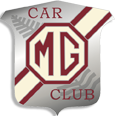Cylinder Heads
When removing a cylinder head you should first undo the nuts 1/2 turn in the reverse order for tightening as shown in the workshop manual. The nuts can then be removed entirely and the head lifted off. When it comes time to refit the cylinder head again it will need to be tightened in the correct sequence. I recommend that it first be tightened to 35lbs and then to 45lbs with a final tighten to 50lbs. Always use a good quality torque wrench.
The studs and nuts should be thoroughly cleaned before assembly and engine oil or anti-seize used on the threads. I use anti-seize and have not had a gasket leaking or failure since. The thread lubricant should also be applied to the head nut washer. If the correct washers are missing, or badly deformed from frequent use they must be replaced. Bad washers place too much friction on the nut. I have found that with oil, the head nuts are reluctant to retighten when the engine gets hot. This could also be the result of threads that have become distorted with use. If the head has been removed a number of times the studs, nuts & washers should be replaced.
Failure to observe the correct tightening procedure could result in a cracked head. If the head has been removed for an overhaul (why else would it be removed?) and it needs to be faced and has more than a .004 - .005 thou bend over its length then it is wise to get it annealed or stress relieved before facing. This can be done by any competent heat treatment business. A lot of heads have been overheated and are bowed. If it is not 'stress relieved' then in all probability it will crack across the top very soon after fitting. (I know it happened to me after spending $200.00 on a full rebuild - a total waste of money). There is no guarantee that heat treatment will stop it cracking but it may help.
When the head and everything else has been fitted the tappet clearances can be set. An easy way is to tighten the adjusting screw to remove all clearance and then 'back-off a quarter turn. This is near enough to 15 thou. The cylinder head must be retightened as soon as the motor gets hot if you have an iron head or when it is cold again if you have an alloy head.
After retightening the head, reset the tappets. I use .012" for the inlet & .015" for the exhaust but check them immediately after turning off. It only takes a moment for the heat to go out of the valves and change the clearance. Always set the tappets with the opposite valve fully open. An easy way to remember which one to adjust is that it always adds up to 9; ie: with No 8 open adjust No 1. The 'A series' clearance is .012". Do not reduce the clearance below that recommended or the valves will burn out.
If the cam or followers are worn then you may have some rattle. Worn rockers do not make any significant difference in being able to set the tappets to the correct clearance.
The MGB head gasket is not usually a 'monotorque' gasket whereas the 'A series' gasket frequently is - especially the Metro gasket. Do not apply any sort of gasket goo to the gasket as they are coated by the Manufacturer with a varnish or silicone bead which melts when the engine gets hot and helps in the sealing process.
Garth Bagnall
